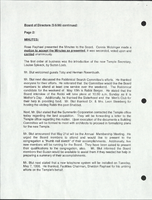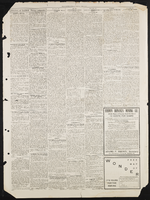Search the Special Collections and Archives Portal
Search Results

Interview with Robert Hahn, October 29, 2004
Date
2004-10-29
Archival Collection
Description
Narrator affiliation: Department Manager, Edgerton, Germeshausen, and Grier (EG&G) Energy Measurements
Text

Interview with Robert Elmer Friedrichs, February 25, 2005
Date
2005-02-25
Archival Collection
Description
Narrator affiliation: Radiation Safety, Reynolds Electrical and Engineering Company (REECo); Sr. Scientific Adviser, National Nuclear Security Administration (NNSA)
Text

Interview with Wendell D. Weart, April 18, 2006
Date
2006-04-18
Archival Collection
Description
Narrator affiliation: Geophysicist: Sandia National Laboratories
Text

Interview with James Keith Magruder, November 22, 2004
Date
2004-11-22
Archival Collection
Description
Narrator affiliation: Assistant Manager for Operations, U.S. Department of Energy
Text

Interview with John Frederick Campbell, January 14, 2005
Date
2005-01-14
Archival Collection
Description
Narrator affiliation: Operations Mining Superintendent, Reynolds Electrical and Engineering Company (REECo)
Text

Minutes from Temple Beth Sholom Board of Directors meetings, 1995-1996
Date
1995 to 1996
Archival Collection
Description
Meeting minutes include reports from committees of the board, correspondence, and balance sheets.
Text

Meeting minutes for Consolidated Student Senate, University of Nevada, Las Vegas, March 20, 1979
Date
1979-03-20
Archival Collection
Description
Includes meeting agenda and minutes with additional information about the activities board meeting and the organization meeting.
Text

Interview with Patrick Rowe, November 5, 2004
Date
2004-11-05
Archival Collection
Description
Narrator affiliation: Drilling Engineer, Reynolds Electrical and Engineering Company (REECo)
Text

Interview with Philip Wymer Allen, August 26, 2004
Date
2004-08-26
Archival Collection
Description
Narrator affiliation: Meteorologist-in-Charge, Weather Bureau Research Station, Nevada Test Site
Text
Pagination
Refine my results
Content Type
Creator or Contributor
Subject
Archival Collection
Digital Project
Resource Type
Year
Material Type
Place
Language
Records Classification

